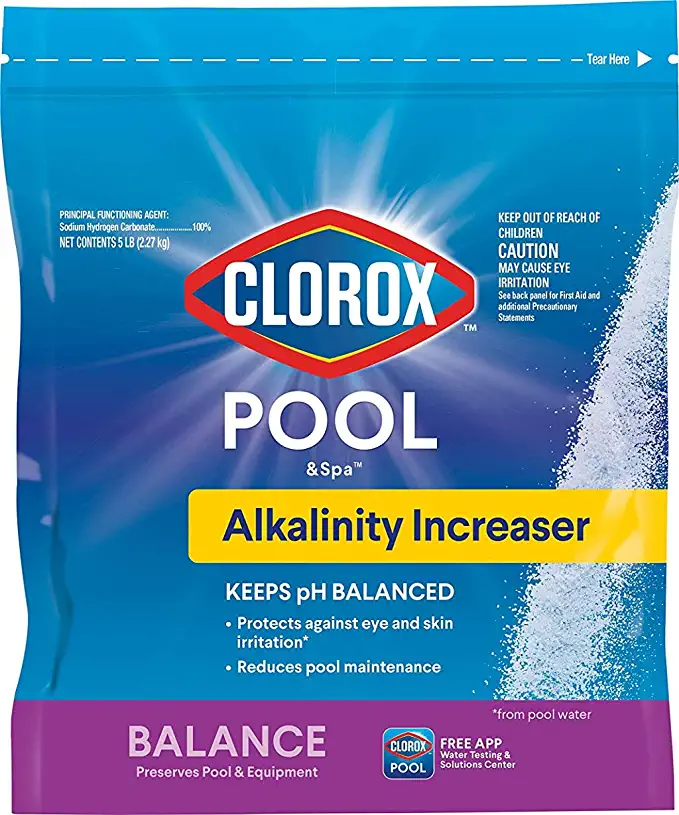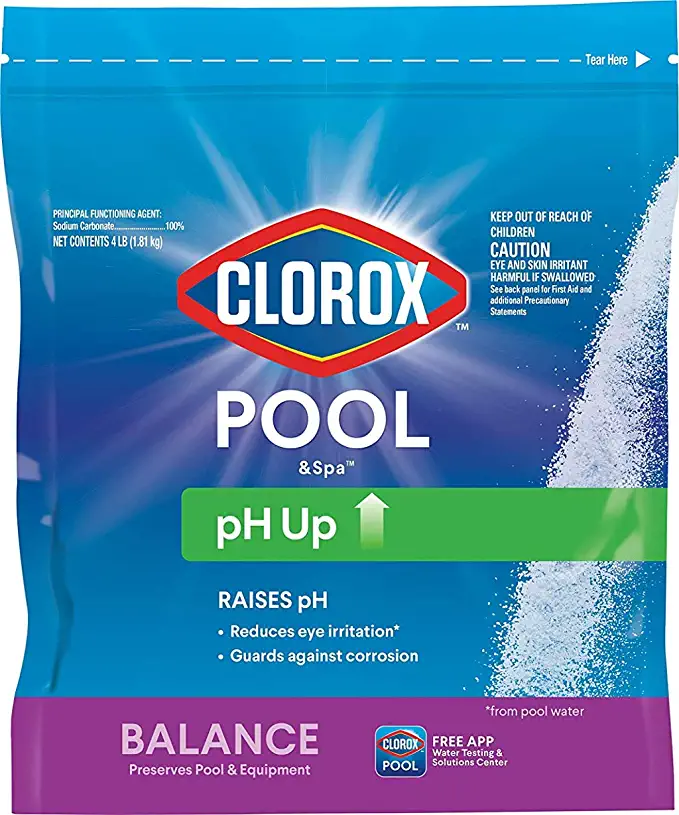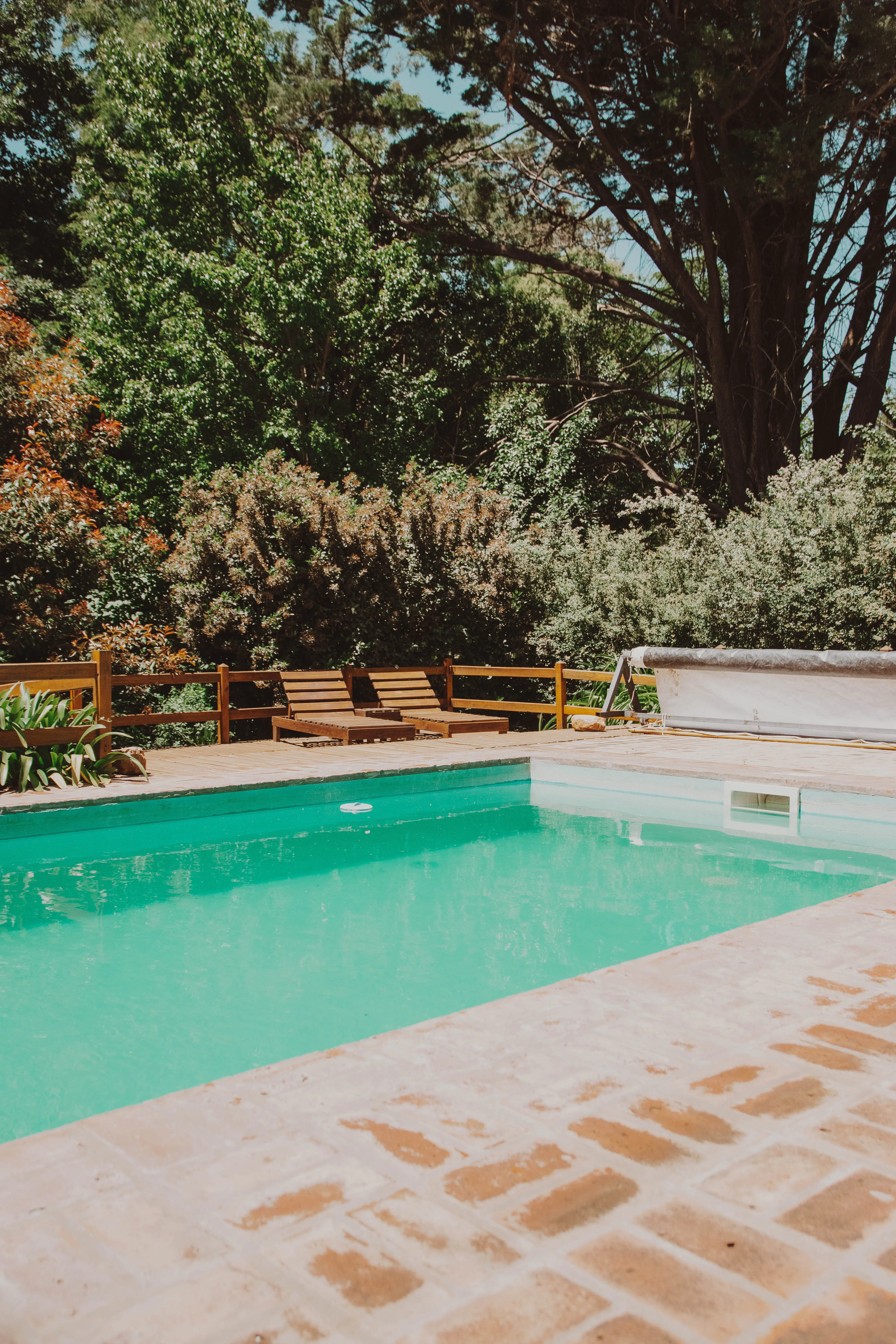When the pH level of the pool is too low, you have to raise it quickly because the consequences can be significant. We will see in detail 6 ways or products to raise the pH level of the pool, including baking soda.
What is a too-low pH?
The ideal pH depends on each type of disinfection. However, the water can sting the eyes and mucous membranes over a maximum level. A too-low pH in the pool can also irritate the skin.
For example, the Victora state government suggests a minimal pH level of 7 (source). The CDC is on the same line (source).
| Standard: | 7 to 8 |
| Recommendation: | 7.2 to 7.8 |
With a chlorine-treated pool, there is no additional problem with a low pH. The lower the ph, the more effective the chlorine will be (the ORP will raise), which allows disinfecting the pool even better.
With salt-water chlorination, the chlorine generator may require a certain pH level to work properly. The chlorine generator produces chlorine from salt, and chlorine, as we have seen, is much more effective when the pH level of the pool is very low. The minimum pH level for the chlorine generator can be found in the manual, often 7 or 7.2. Getting a low pH level with a chlorine generator is rare because this process raises the pH.
With a bromine-treated pool, it is the opposite of a chlorine-treated pool. Bromine loses its effectiveness with a lower pH. The pool will not be sufficiently disinfected, and microorganisms or algae may develop.
Risks and consequences of a too-low pH level in the pool
For humans, adults, or children, a too-low pH in the pool can lead to skin, eye, and mucous membrane irritations.
For pool equipment, it can also create problems because they were not necessarily designed to work with very acidic water, such as heat pumps.
For the quality of the water, it can be critical. With a bromine-treated pool, a low pH level will make the bromine ineffective. Tiny green algae can thus grow, fill the pool and make the water cloudy and/or green. With a chlorine-treated pool, the disinfection will still be effective, but the water may also change color.
One of the consequences or risks of a too-low ph level in a pool is the development of tiny white algae.
Is it possible to swim with a too low pH in the pool? If all the other water parameters are suitable and the pH level is between 7 and 8, swimming is possible. However, if the pH is below 7 or one of the other water parameters is not good, you should not swim in the water!
How to measure the pH of the pool?
There are several ways to measure the pH of the pool:
- colorimetric tests
- electronic testers
Colorimetric tests are pH strips or tablets. It is straightforward to use and very reliable. You dip the strip in water for 5 seconds or take a small quantity of water in which you put a tablet to dissolve. The problem is that you get a color that you have to transpose into a pH level. You cannot get a clear and precise pH level in the pool, but it indicates whether it is acceptable.
Electronic testers are equipped with a probe to be immersed in the water. You get a precise and explicit value of the pH level. On the other hand, the cheapest electronic testers may be unreliable. Moreover, the probe must be calibrated yearly and replaced every 3 to 5 years.
You must test the water at least once weekly; it is pretty constraining. But it is crucial because the evolution of the pH over time is just as important as its level.
Why does the pH of the pool change?
The pH level of the pool is constantly changing. Every new element in the water changes the pH level. And it’s everything: chemicals, insects, leaves, dust, rain, pollution, and the swimmers.
Another water parameter helps stabilize the pH level: the alkalinity (TA). The higher the TA, the more stable the pH will be, and the more chemicals will be needed to raise or decrease it.
Chemicals to raise the pH level in the pool
4 main chemicals can be used to raise the pH:
- sodium bicarbonate (baking soda or sodium hydrogen carbonate)
- sodium carbonate
- sodium hydroxide
- sodium hypochlorite


Raising the pH level in the pool with baking soda, or sodium bicarbonate
Baking soda (sodium bicarbonate or sodium hydrogen carbonate) is often sold in powder form in stores. You can check the composition on the packaging of each product.
Baking soda will affect both the TA and the pH. The two parameters are closely linked, and changing one without affecting the other is impossible. Baking soda will therefore raise the TA and pH levels in the pool. However, the bicarbonate will raise the TA faster than the pH.
Most pools are relatively short on TA. And it is challenging to raise TA while maintaining pH. That’s why you should take the opportunity of a low pH level in the pool to raise the TA! Of course, check beforehand that your pool does not have a surplus of TA with a test strip.
As it is a product intended to modify the TA, the instructions do not often indicate the effect of the baking soda on the pH. You can consider that baking soda allows raising the pH by 0,1 point with 83g/m³.
For example, “Clorox Alkalinity increaser” contains sodium hydrogen carbonate, and “Clorox pH up” contains sodium carbonate.
Not too much at a time. Avoid putting more than 50g/m³ of product in the pond. For example, for a 50m³ pond, you should not put more than 2.5kg at once. It will be too much of a shock to the water, and there is a considerable risk that it will become cloudy. We also recommend using small doses because the water balance in a pool is very complex. Add only 50% of the necessary quantity and wait 24 hours to see the evolution of the water quality in the pool.
Raise the pH of the pool with sodium carbonate
pH and TAC are always closely related. Sodium carbonate will raise the pool’s pH, and so will TA, but to a lesser extent. It often happens that pools are lacking in TA, which is why it is usually recommended to use sodium bicarbonate when the pH level of the pool is too low. Make sure to check your water parameters with a test strip before acting.
Every sodium carbonate supplier shows the quantity of product to use. The concentration is not always the same. You can find products with +0.1 pH with 100g/m³ and others with +0.2 pH with 150g/m³.
Little by little. As usual, avoid using too strong treatments all at once. It could disturb the water too much at once and generate other problems, like cloudy pool water. As for baking soda, avoid adding more than 500g/m³ of product simultaneously.
Raising the pH of the pool with sodium hydroxide
Sodium hydroxide is often sold in liquid form.
Be careful. It is hazardous to handle and not recommended for manual treatment! Only use if you have an automatic treatment with a dosing pump. Always wear protective glasses and gloves.
The dosing pump will progressively inject the sodium hydroxide to raise the pH level in the pool. No need to dose it yourself. The pump will inject the product little by little until the pH of the pool returns to the set level.
Raise the pH of the pool with sodium hypochlorite
Sodium hypochlorite is found in a widespread product: bleach.
Bleach has a very high pH, around 12. By putting bleach in the pool, the pH level will raise.
Bleach is a chlorinated product. It means that it will raise the chlorine level and, to a lesser extent, the pH level. Therefore, it should only be used in chlorine or salt pools that have both a low pH and a low chlorine level.
Bleach is rarely used in swimming pools because of other disadvantages. First, it is not very concentrated. You will use a lot of bleach. Secondly, it can create limescale problems in the pool.
So it is best to avoid bleach. It could be used in particular cases where the pH is too low and the chlorine and the hardness of the water (the TH). This is very rarely the case.
Increasing the pH of the pool naturally
There are 2 ways to raise the pH level in the pool without using chemicals. Do not rely on it to make up for very low ph. It is not designed for that. The 2 ways to naturally raise the pH level in the pool are:
- aerate the water
- switch to salt-generated chlorine
Aerating the water releases the CO2 (carbon dioxide) it contains. CO2 increases the acidity of the water. By aerating the water, the CO2 will evaporate, and the water will be less acidic. The effect is relatively weak, and the water must have CO2 to release.
Switching to salt-generated chlorine also raises the pH. The chlorine generation process releases soda which will decrease the acidity of the water. A ph pump is often also installed when a chlorine generator is installed.
Miracle method? Several websites present revolutionary ways to raise the pool’s pH naturally while saving money. The trick is called baking soda, which is the product that everyone has been using in the pool for decades. No revolution here. The secret to pool maintenance is not in a miracle product. All you need to do is regularly monitor the water quality.
Also, don’t rely on rainwater to raise the pH level in the pool. Generally, rainwater is slightly acidic, i.e., with a pH below 7. Rainwater will therefore tend to lower the pH of the pool.
Other informations about the pH level in the pool:
It is very low. You should not swim and add one of the chemicals seen to raise the pH.
